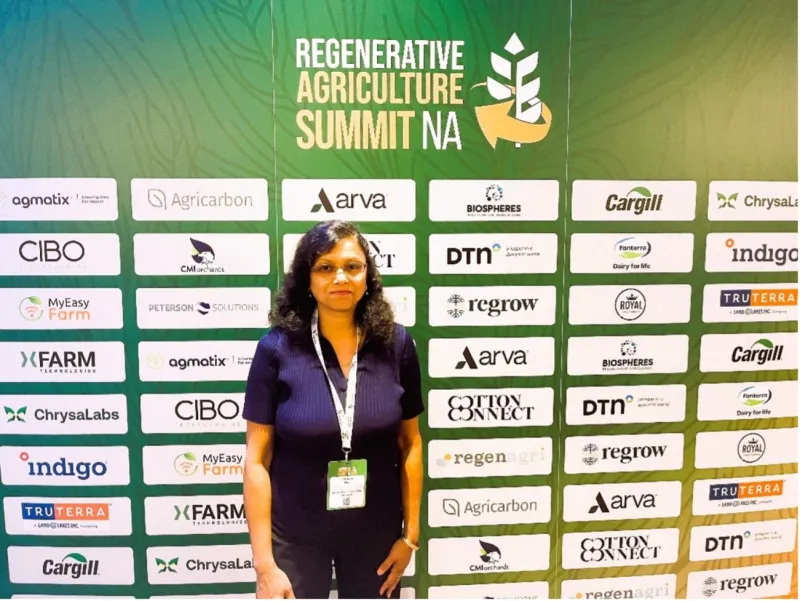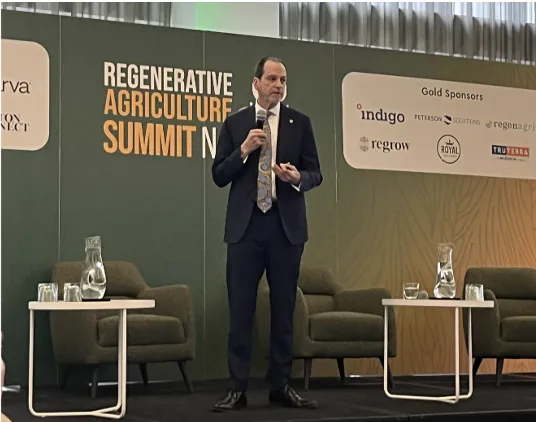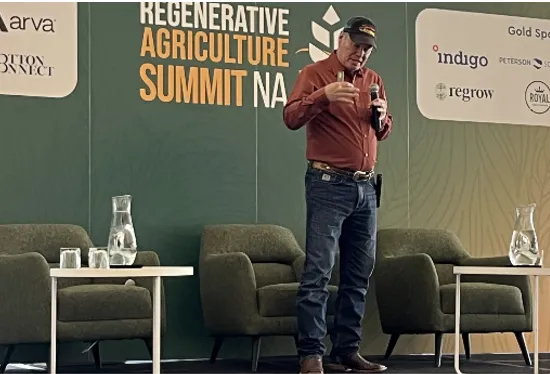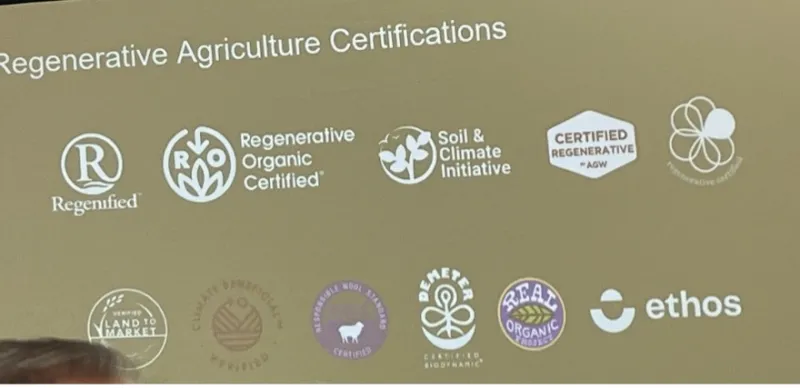
The Regenerative Agriculture Summit, North America in Chicago brought together growers, industry and supply-chain representatives, nonprofit professionals, researchers, educators and other stakeholders from the food and fiber sector to discuss pathways for scaling up regenerative agriculture and building resilience in supply chains. The event was held at the Radisson Blu Aqua Hotel on March 25-27.
Summit Chair Erica Campbell opened discussions by listing numerous challenges to certifying “regenerative,” while also highlighting the Common Ground project “100 Million Acres” (which aims to transition 100 million acres of U.S. crop and rangeland into certified regenerative agriculture by 2030), as well as California Department of Food and Agriculture’s efforts at defining regenerative agriculture.

Soil Health Institute’s Wayne Honeycutt stressed using relevant soil health parameters and regional benchmarking. It was also exciting to hear about different initiatives from industry representatives, such as farmer-driven processes from Nestle Purina’s Shandrea Stallworth, direct sourcing of regenerative cotton from growers in Alabama, and digital product codes enabling farm traceability options from Sarah Moore of Victoria’s Secret.
Audrey Leduc of McCain discussed the importance of the “Regenerative Agriculture Framework” introduced to potato growers in the Northern and Southern Hemispheres and the establishment of the “Future of Potato Farming Fund” with McDonald’s. Simone Gourguechon of McDonald’s emphasized the need to create excitement through flashy events and games and reminded attendees that everybody must be at the table – not just the sustainability team – to speed up the process.
Cheryl Isenberger of Land O’ Lakes Dairy Foods focused on work with consumer-packaged goods (CPG) partners for time-bound reduction of dairy industry carbon footprint and including everybody in the value chain, especially the smaller growers. Ryan Smith spoke about Danone’s regenerative agriculture agreements with farms to boost resilience in supply chains and maintain circularity, Jennifer Simpson of Chobani spoke about work in this direction [MH1] and John Deere’s Emma Bassein discussed helping growers with recordkeeping and data management.

Indiana grower Rick Clark underscored the benefits of no-till, cover-cropped green fields, biostimulants, non-GMO seeds, crop diversity and reduced input costs from these practices. Illinois grower Casey McCausland also testified to lower production costs with regenerative agriculture practices.
Peter Byck of Arizona State University and sixth-generation farmer Allen Williams of Understanding Ag and the Soil Health Academy discussed adaptive multi-paddock grazing systems. Oklahoma cotton grower Reid Nichols stressed the producer being a partner in this process and Jim Kleinschmidt of Other Half Processing shared his successful cross-collaboration with Timberland on thrown away hides.
Alabama cotton grower Larkin Martin shared her work with Victoria’s Secret, Cali Noland of Louis Dreyfus Company, and Brent Crossland of 5Loc Cotton reiterated that capital investments are key, as cotton prices go down. A regenerative grower from Texas, Lacy Cotter Vardeman, discussed the role of cotton co-ops.

The key takeaways from the different sessions were:
- Measuring outcomes: certification should be in consistent language, not open-ended; uniform standards for farms and supply chains are needed and should be easy to understand.
- Data digitization, accuracy and open-source sharing are important, but trust and privacy are crucial.
- Planning should be beyond carbon: resilient supply chains and farmer and community success are key.
- Regenerative ag has a different timescale, so it’s important to establish confidence in timing, magnitude and return on investment.
- De-risking through investment and precompetitive collaboration is necessary; varied creative financing models need to be experimented.
- Organic, regenerative agriculture should have access to the same capital market tools as conventional agriculture.
- Matching with CPG partners and long-term agreements with growers need to be encouraged.
- Affordable, patient capital is needed for transition and adoption.
- Traceability and transparency in supply chains are needed.
- Not relying solely on government only, the roles of philanthropic entities and public, local franchises are crucial.
- Field days, pilot studies and human stories are important, apart from scoring.
- University-level education, additional training, and land-grant institutions and extension are key.
- The whole village is needed for a transition to regenerative agriculture; we cannot just create deep silos.
